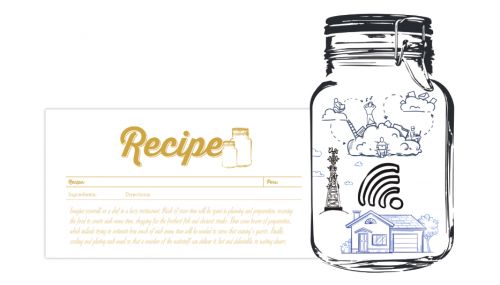All
BI: The Past, the Future, and Living in the Now
by Aaron Cargas, Cargas Systems

Gurus want us to live in the now, so why are we always nostalgically ruminating on the past and vehemently prognosticating the future? Worse yet, why do people often have incorrect memories causing them to make bad predictions? “That marketing campaign three years ago was incredible!”, when in reality I’m only saying that because I designed it, and my Mom liked it.
The trifecta of business mismanagement is: misremembering the past, prognosticating about the future based on shoddy information, and forgetting to focus on the present.
Enter the concept of Business Intelligence or BI. By most accounts, the term was coined in the Civil War era, but soon technical people adopted it and applied it to technology. Why? Because it’s a great umbrella term representing the synthesis of large amounts of diverse business information into actionable insights. Plus it sounds cool.
Mining for Insight
While the term has been applied to many different specific technologies, what it typically means now is mining the data in your business software to gain useful insights that help you make meaningful improvements to your business. Regardless of the technology, the bigger questions are: 1. Can you get actionable information? 2. Are you comparing that information to valid industry metrics? 3. Are you doing intelligent things with it to improve your business?
If yes, then you are engaged in some form of Business Intelligence. But I return to my original question, even if you are using Business Intelligence to help you improve, are you thinking about it in terms of the past, present, and future? If not, then keep reading. Please.
The Past: There are many tools available to extract, manipulate, and stack your historical data into a nice seven-layer salad. Most business systems have some tools built in, and there are many add-on tools, some specific to the energy market. But, usually the biggest stumbling block is not the tool, it’s whether you have the processes in place to even track the information.
For example, when I claim my marketing campaign was a roaring success, if we didn’t tie campaign responses to new customer acquisitions, we don’t actually know. If we did, then we can extract, analyze, and compare that data against industry standard campaign response metrics, helping us make better decisions on whether to repeat that spend again. (In this case, we find my Mom was the only one to actually respond to the campaign.) With Business Intelligence, start by deciding what questions you want answers to, and then alter your processes to capture that data. Then you extract, analyze, and often find how wrong your assumptions were.
The Present: It’s great to analyze the past to make better plans, but what about putting real time Business Intelligence in the hands of front line people to make better decisions right now? This is the most overlooked area of Business Intelligence, because most systems are not real-time enough to give your delivery manager, service manager, or customer service people up-to-the-minute information to make better decisions throughout the day.
But that is changing. As driver and technician mobile applications become more common, and the always-on world of 4G connectivity combined with the you-can’t-hide world of GPS takes hold, back office folks have real-time dashboards of field worker activity. Are they running behind? When is that customer’s delivery going to happen? Who is the closest service tech to this urgent call? All this is shown in real time, enabling office folks to quickly answer customer questions, make better scheduling decisions, and get more throughput from the assets out on the road. That’s real time Business Intelligence and it’s arguably the most effective form.
The Future: In the future computers will extract thoughts directly from our brains, mash them with a sea of business data, and predict the future with surprising accuracy. We will not so much use computers as they will use us, while the great computing super-network does its thing. Just kidding. I have no idea what’s going to happen in the future. And neither do you. But, I can tell you this, if you take the time to summarize past data and compare it against relevant industry benchmarks, you will gain useful insights to guide your future process improvements. In that sense, Business Intelligence is an ongoing project where you are constantly analyzing the past to help you shape your business future. It’s not magic, but it is better than just using your gut.
Business Intelligence is a grandiose term, but when you distill it down, it’s simply using data in creative ways to: analyze the past, make better real time decisions, and improve your future performance. I’m no guru, but I will ask you to meditate on that for a little while.
Related Posts
 NORA Net-0 Home Update
NORA Net-0 Home Update
Posted on October 6, 2023
 Building Your Information Network with Propane Tank Monitors
Building Your Information Network with Propane Tank Monitors
Posted on August 11, 2023
 A Recipe for Delivery Efficiency
A Recipe for Delivery Efficiency
Posted on August 11, 2023
 Don’t Ignore the Storage Capacity You Already Own
Don’t Ignore the Storage Capacity You Already Own
Posted on July 18, 2023
Enter your email to receive important news and article updates.
